The History of the Monuments Men
The Nazis War on Culture: “Degenerate Art”
The fate of the 11 million victims of the Holocaust was shaped by Nazi propaganda and the “weaponization” of art during the mid-1920s through the early 40s. In Hitler’s 1925, autobiography and political manifesto, Mein Kampf (“My Struggle”), he viciously attacked modern art as degenerate products of a decadent twentieth century society. The Nazis took Aryanism to the extreme. Making it the foundation of the Nazis rationale for exterminating Jews, Poles, Roma (Gypsies), the disabled, the mentally impaired, and other peoples who did not fit the “Aryan” stereotype.
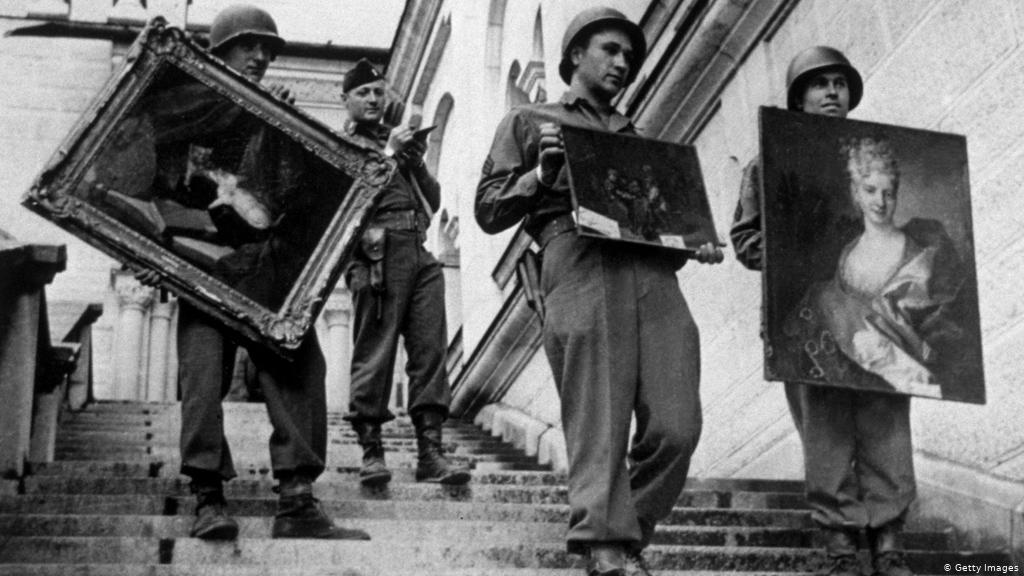
This policy of extermination included the destruction of the cultural heritage of those groups deemed inferior by the Nazi Party. Artworks created by “non-Aryan” were considered “degenerate art” by the Nazis and were purged from German museums. In 1937, the Nazis even held a “Degenerate Art” exhibit to highlight “non-Aryan” pieces as a propaganda tool justifying the Party’s worldview. Over the next few years, the Nazis removed and stole tens of thousands of “degenerate” artworks from state and private collections throughout Europe. Nazis destroyed some of these works and sold others abroad to help finance their conquest of the Continent.
Who Were the Monuments Men & Women?
This group was made up on museum curators, art historians, librarians, architects, and artists from allied nations who worked in the Monuments, Fine Arts, and Archives program during and after WWII to recover and restitute looted cultural treasures.
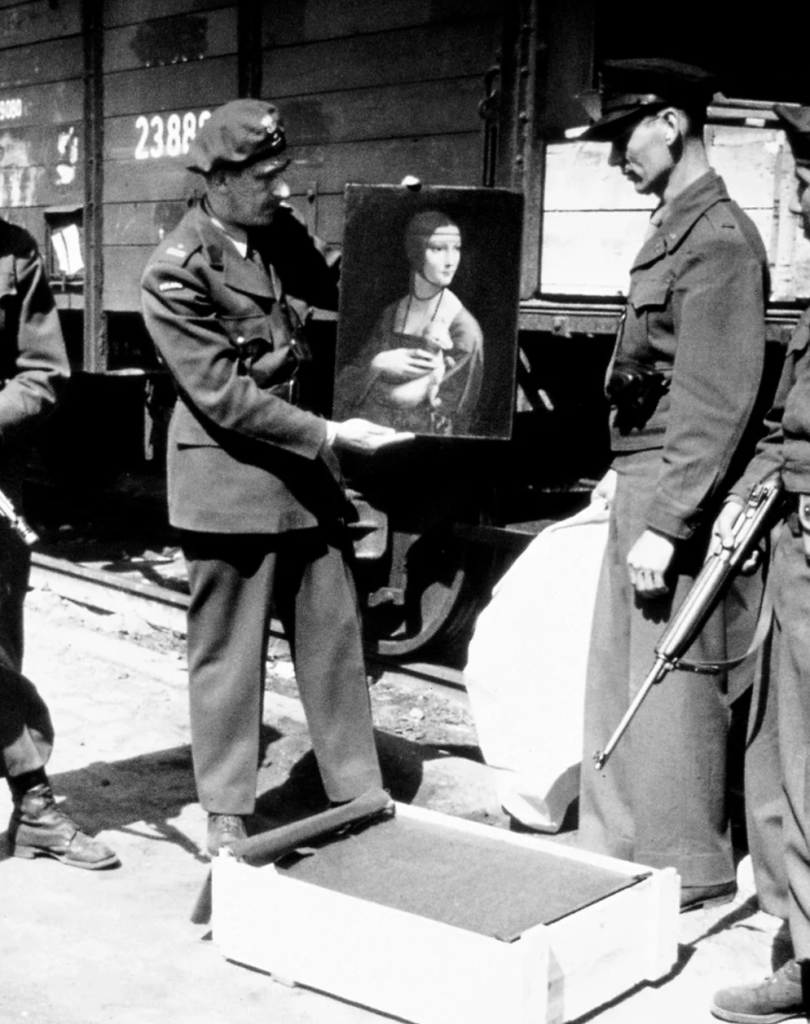
Monuments, Fine Arts, and Archives (MFAA) Section in Europe
Established in June 1943, the Monuments, Fine Arts, and Archives (MFAA) Section, consisting of approximately 345 men and women representing 14 nations, identified by the GIs as “Venus Fixers,” or “Monuments Men,” were recruited and assigned to MFAA based on their pre-war civilian occupations as art and history scholars, museum curators and directors, conservators, artists, archeologist, architects, librarians, and archivists.
At the Supreme Headquarters Allied Expeditionary Force (SHAEF) the “Monuments Men” were assigned to the United States Army Civil Affairs and Military Government Division. The Monuments Men were responsible for protecting artworks, cathedrals, archives, monuments, and other cultural sites in Europe from damage and looting.
Monuments, Fine Arts, and Archives (MFAA) Section in Asia
Soon after the liberation of the Philippines in August 1945, Office of Strategic Services (OSS) operatives, and other US and Allied forces, began to discover hidden artworks, gold repositories, and other cultural heritage items looted by the Emperor of Japan’s military forces. Following Japan’s official surrender on 2 September 1945, the Arts and Monuments Division of the Civil Information and Education Section the Supreme Command of the Allied Powers (SCAP) in Tokyo was established to safeguard and organize the recovery of Asia’s looted cultural treasures.
Between 1943 and MFAA’s dissolution in 1946, the Monuments Men succeeded in recovering thousands of paintings, sculptures, gold, and other cultural objects in both Europe and Asia. Though the unit deactivated in Germany in 1950, the specialty remains in today’s United States Army Civil Affairs.
How the ASOM is Connected
The ASOM has an item belonging to a Monument Man in our archives!
Captain Walker Kirkland Hancock was a renowned sculptor who had won the prestigious Prix de Rome before the war and designed the Army Air Medal in 1942. During the war, Hancock became a Monuments Man and recovered numerous works of art and cultural objects,
He also prepared the “French Handbook”, which listed monuments in France to be exempt from military use and to be considered for protection in future operations. The protection of certain cultural monuments was facilitated through directives derived from his work in the MFAA.
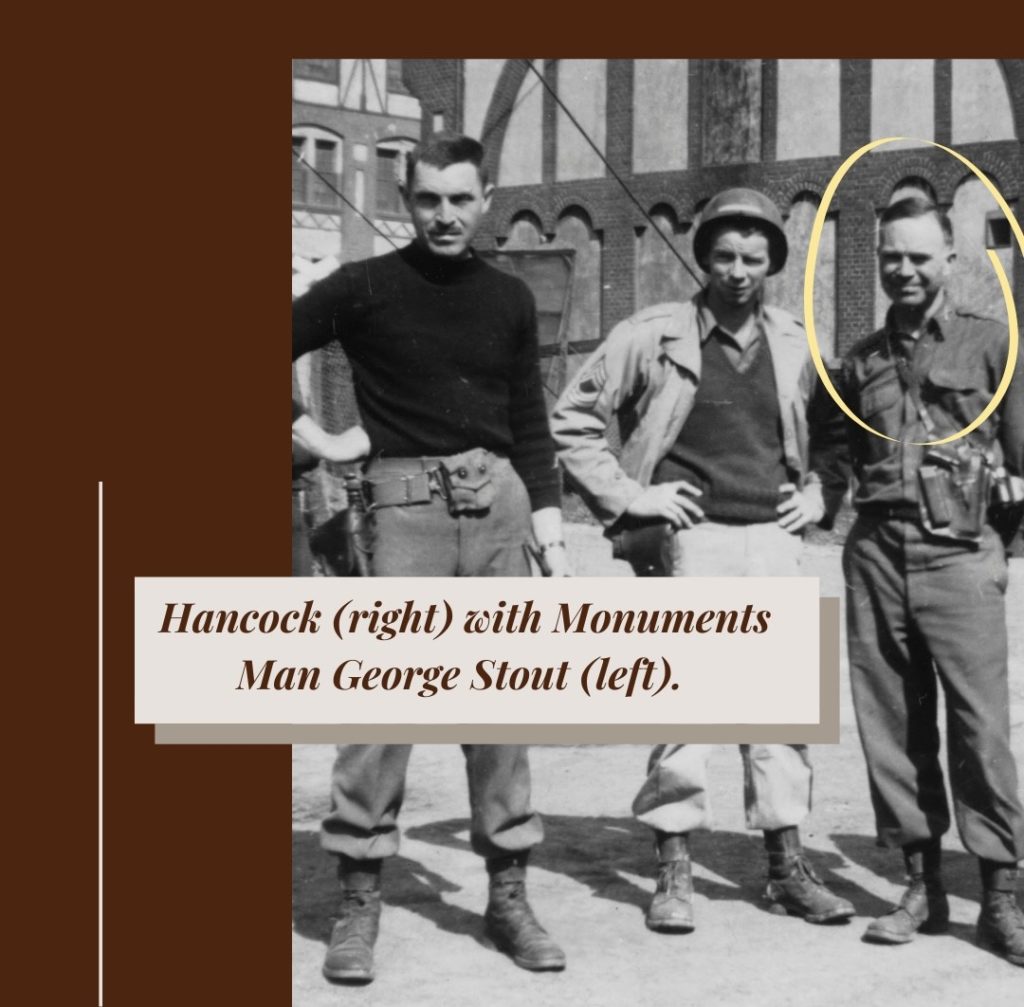
In October 1944, Hancock entered the devastated of Aachen, Germany, and inspected the severely damaged Aachen Cathedral that previously housed the relics of Charlemagne.
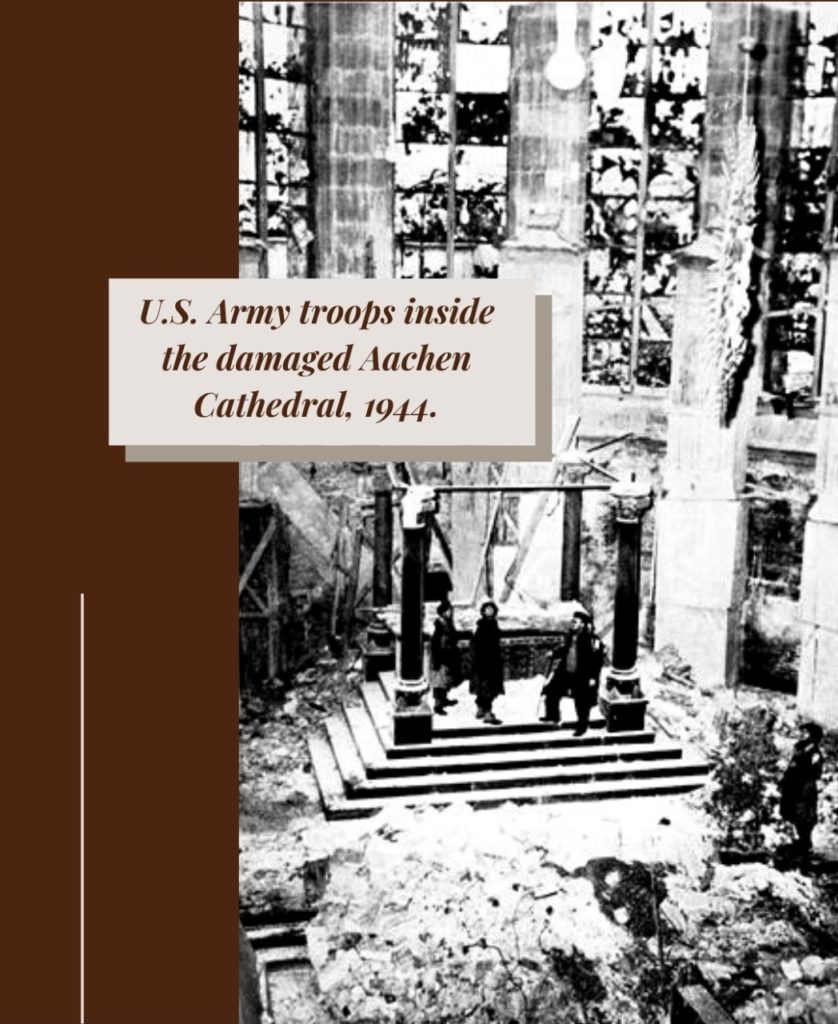
He is also credited with helping to relocate the Madonna of La Gleize, in the city of La Gleize in Belgium- amongst many other cultural objects.
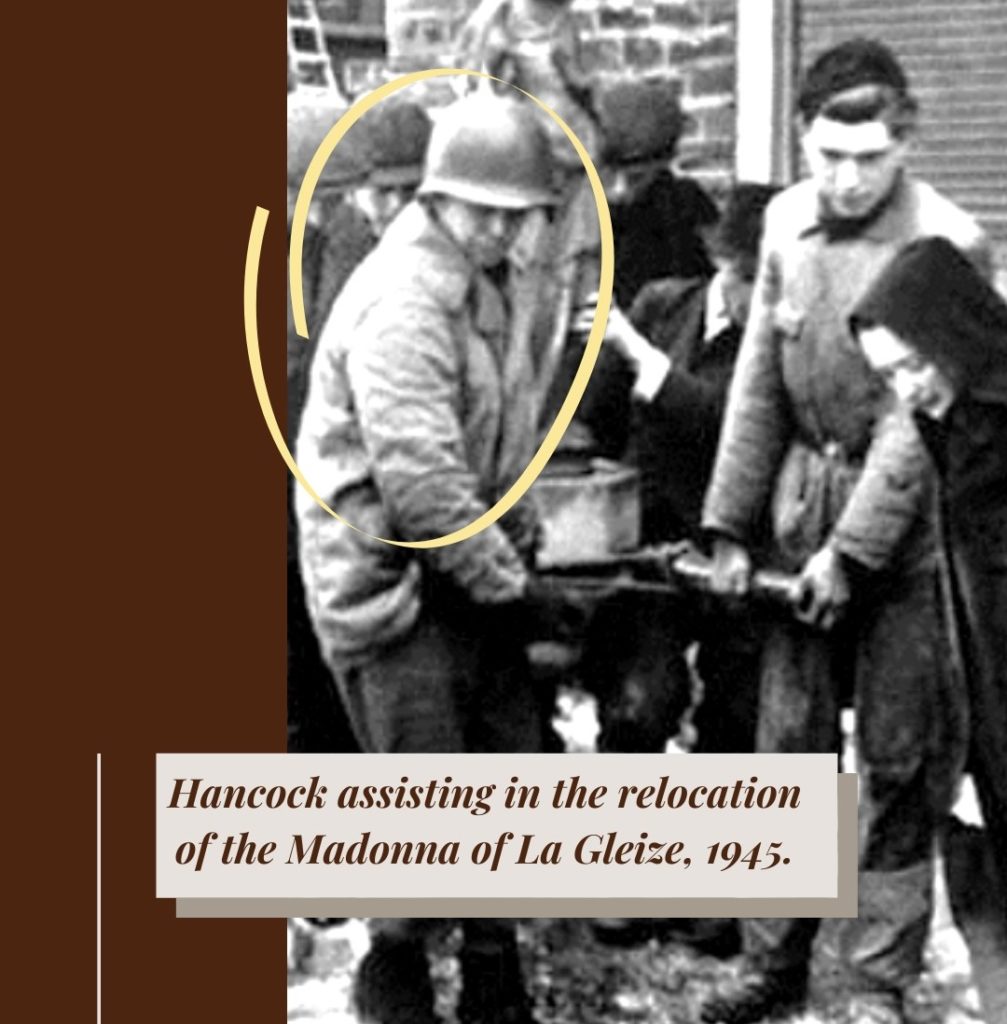
The U.S. Army Airborne and Special Operations Museum is proud to have in its collection the helmet of Captain Hancock.
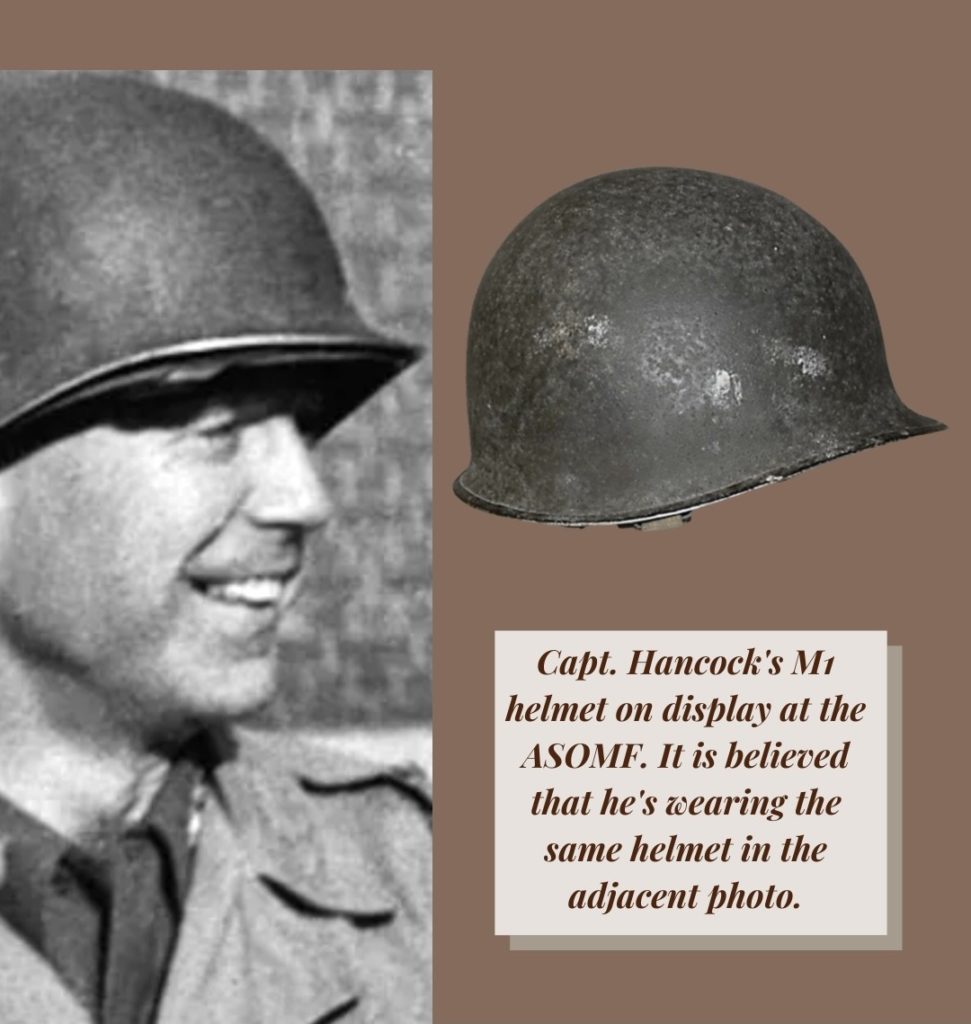
ASOM Partnership with the Monuments Men Foundation
The U.S. Army Airborne and Special Operations Museum is pleased to announce it has joined the newly established Monuments Men and Women Museum Network.
We have a meaningful connection to the Monuments Men and Women and are proud to be part of this initiative established by the Monuments Men Foundation for the Preservation of Art.
In celebration of this partnership, the ASOM will be offering a 10% off discount in merchandise in-store and online to all Monuments Men Foundation members. Likewise, the MMF will be offering a 10% discount to ASOMF Friends on their online store.
To become a ASOMF Friend today, click the button below!



